Introduction to Nature’s Largest Giants
In every corner of our planet, nature has created living marvels that defy our understanding of size. These are the animals that make us feel small—not just because of their sheer mass, but because they represent millions of years of evolution, perfectly adapted to their environments. The Top 10 Heaviest Animals in the World: Nature’s Largest Giants include species from both land and sea, and while they differ in habitat and lifestyle, they all share one thing in common—immense weight that shapes their existence.
Heavy animals are not just curiosities; they are keystone species in their ecosystems. Whether it’s the blue whale filtering countless gallons of seawater for krill or the African elephant shaping the savanna with its sheer strength, these giants influence the very landscapes they inhabit. Studying them helps scientists understand biodiversity, food chains, and the impact of environmental changes.
Why Weight Matters in the Animal Kingdom
The Role of Body Mass in Survival and Dominance
In the wild, size often equals power. For predators, a larger body means greater strength and hunting capability. For herbivores, size offers protection—few predators will risk attacking an adult elephant or hippopotamus. Larger animals also tend to have fewer natural predators, meaning they can devote more energy to feeding, mating, and raising young.
For aquatic animals, weight plays another vital role: thermoregulation. In icy seas, layers of blubber allow species like the blue whale and whale shark to conserve heat. Larger size also helps marine giants travel vast distances without expending excessive energy, thanks to better momentum and energy efficiency in water.
Adaptations of Heavy Animals to Their Habitats
Carrying hundreds or even thousands of pounds requires special evolutionary modifications:
- Skeleton Reinforcement – Elephants have pillar-like legs and thick, dense bones to bear their bulk.
- Buoyancy Control – Blue whales rely on fat stores and body shape to move gracefully in water.
- Feeding Strategies – Heavy animals often have diets that match their caloric needs. For example, hippos graze for hours each night to sustain their massive bodies.
- Reproductive Investment – Many heavy animals have fewer offspring but invest heavily in protecting them, as survival rates are higher when parents are formidable giants.
#1 Blue Whale – The Ocean’s Colossal Titan
The blue whale (Balaenoptera musculus) is not only the heaviest animal alive today—it is the heaviest animal to have ever existed on Earth. Even the largest dinosaurs didn’t match its mass.
Physical Characteristics and Weight Range:
- Length: Up to 100 feet (about the size of three school buses)
- Weight: 100–150 tons, with the largest recorded at 199 tons
- Heart: Weighs around 400 kg (880 lbs)
- Tongue: As heavy as an elephant
Diet and Feeding Habits:
Blue whales feed primarily on krill—tiny shrimp-like crustaceans. During feeding season, a single whale can consume up to 4 tons of krill per day. They use a technique called lunge feeding, where they accelerate toward a dense patch of krill with their mouths wide open, filtering the water through their baleen plates.
Fun Facts:
- Blue whale calves are the heaviest babies in the world, weighing about 6,000–8,000 lbs at birth.
- Their low-frequency calls can travel hundreds of miles underwater.
- Despite their size, they are gentle giants, posing no threat to humans.
#2 African Elephant – The Gentle Land Giant
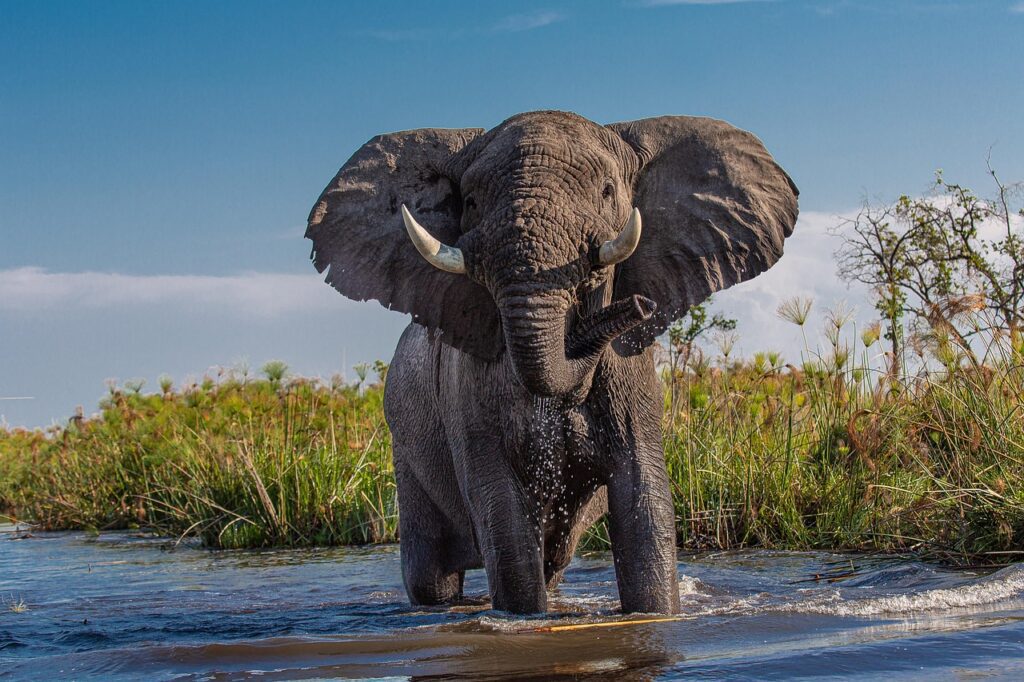
The African bush elephant (Loxodonta africana) holds the title for the largest and heaviest land animal. Males, known as bulls, are significantly larger than females.
Size and Weight Range:
- Height: 10–13 feet at the shoulder
- Weight: 5–14 tons
- Trunk: Capable of lifting up to 600 lbs
Role in the Ecosystem:
Elephants are nature’s bulldozers. They knock over trees to access leaves, create pathways used by other species, and dig waterholes during droughts. This makes them keystone species, as their actions shape the savanna and forest ecosystems.
Conservation Status:
Unfortunately, African elephants face severe threats from poaching for ivory and habitat destruction. Conservation projects like anti-poaching patrols, community-based wildlife management, and habitat restoration have been crucial in slowing population declines.
#3 Colossal Squid – The Deep Sea Monster
The colossal squid (Mesonychoteuthis hamiltoni) is one of the most mysterious and elusive animals on the planet. Found in the frigid waters of the Southern Ocean, it is rarely seen alive, and much of what we know comes from specimens caught accidentally by deep-sea fishing vessels.
Anatomy and Size:
- Weight: Up to 1,100 lbs
- Length: 33–46 feet
- Eyes: Largest in the animal kingdom (up to 11 inches across)
- Tentacles: Lined with rotating hooks for catching prey
Unlike its smaller relative, the giant squid, the colossal squid has a more robust body and thicker tentacles, giving it more mass.
Rare Sightings and Myths:
For centuries, sailors told tales of enormous tentacled monsters dragging ships beneath the waves. These myths likely originated from rare encounters with colossal squid. The first confirmed live footage was only captured in the 21st century, proving that fact can be just as fascinating as fiction.
#4 Whale Shark – The Largest Fish
The whale shark (Rhincodon typus) is the world’s largest fish and a slow-moving, filter-feeding marvel of the ocean. Despite their size, whale sharks are docile and often allow divers to swim alongside them.
Feeding Patterns and Diet:
Weighing up to 20 tons and stretching more than 40 feet long, whale sharks feed on plankton, small fish, and krill. They swim with their enormous mouths open, filtering thousands of gallons of water each hour.
Interaction with Humans:
Whale sharks are a highlight for eco-tourism in countries like the Philippines, Mexico, and Australia. Strict regulations ensure that tourism doesn’t stress these gentle giants, as they are classified as endangered due to bycatch and habitat loss.
#5 Hippopotamus – The River Heavyweight
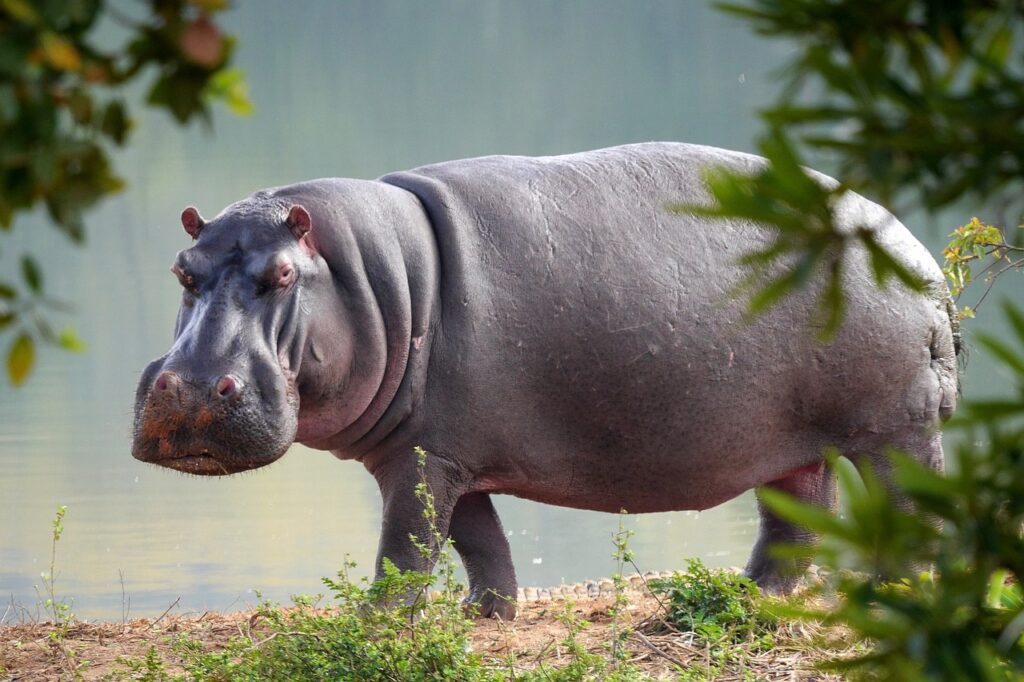
The hippopotamus (Hippopotamus amphibius) is the second-heaviest land mammal after the elephant. Despite their rounded, comical appearance, hippos are among Africa’s most dangerous animals.
Aggressive Yet Herbivorous:
- Weight: Up to 4 tons
- Diet: Mostly grass, but they can consume up to 80 lbs in a single night
- Behavior: Highly territorial, especially in water
Hippos spend much of their day submerged, using water to keep their skin moist and cool.
Territorial Behavior:
Male hippos fight fiercely over territory, using their massive jaws and sharp tusks to fend off rivals. Despite being herbivores, they are responsible for more human fatalities in Africa than most predators.
#6 White Rhinoceros – The Horned Heavyweight
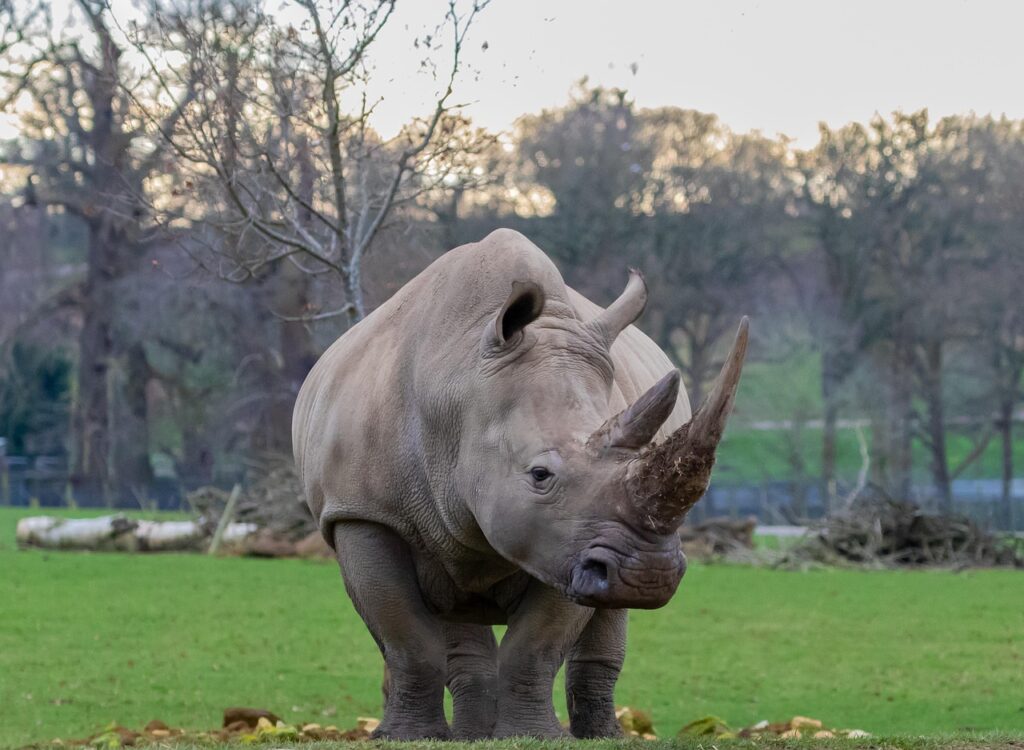
The white rhinoceros (Ceratotherium simum) is one of Africa’s most iconic animals and the largest of all rhino species.
Weight and Physical Strength:
- Weight: Up to 2.5 tons
- Skin: 2 inches thick, acting as natural armor
- Horn: Composed of keratin (the same protein as human hair and nails)
Threats and Conservation Efforts:
The white rhino has been brought back from the brink of extinction through intensive conservation programs. However, poaching for their horns remains a critical threat, driven by demand in black markets.
#7 Giraffe – The Towering Heavy Giant
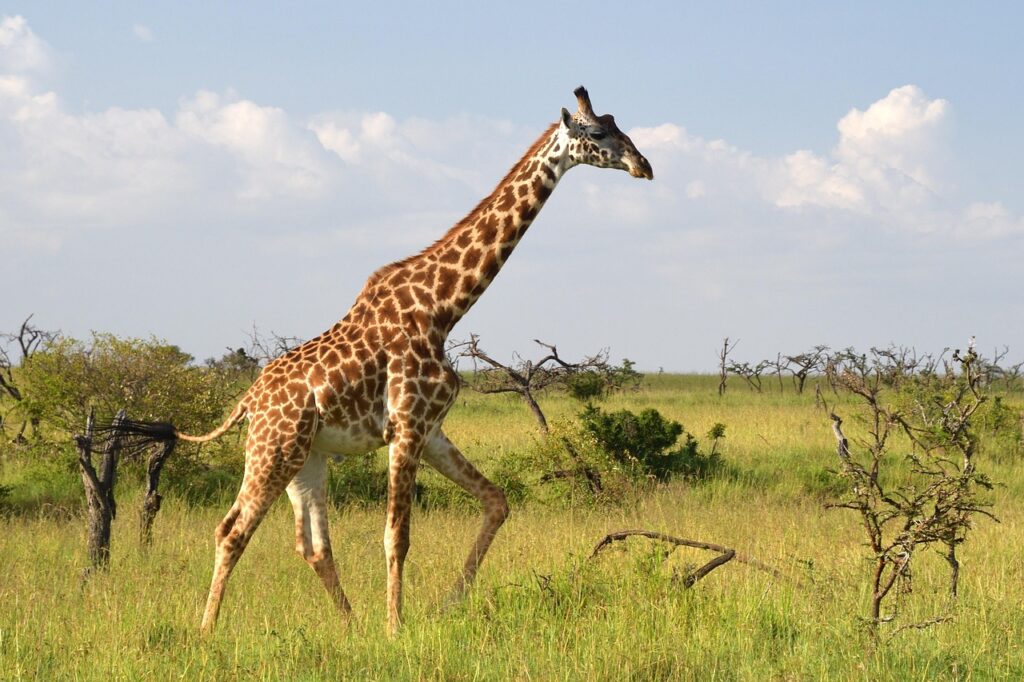
The giraffe (Giraffa camelopardalis) is not only the tallest animal in the world but also surprisingly heavy.
Height vs. Weight Balance:
- Height: Up to 18 feet
- Weight: 2,600–3,000 lbs
- Neck: Can be over 6 feet long, containing only seven vertebrae (the same number as in humans)
Feeding from Tree Canopies:
Giraffes primarily eat leaves from acacia trees, using their long, prehensile tongues to strip foliage. Their height gives them access to food sources unavailable to most herbivores.
#8 Gaur – The Mighty Wild Bovine
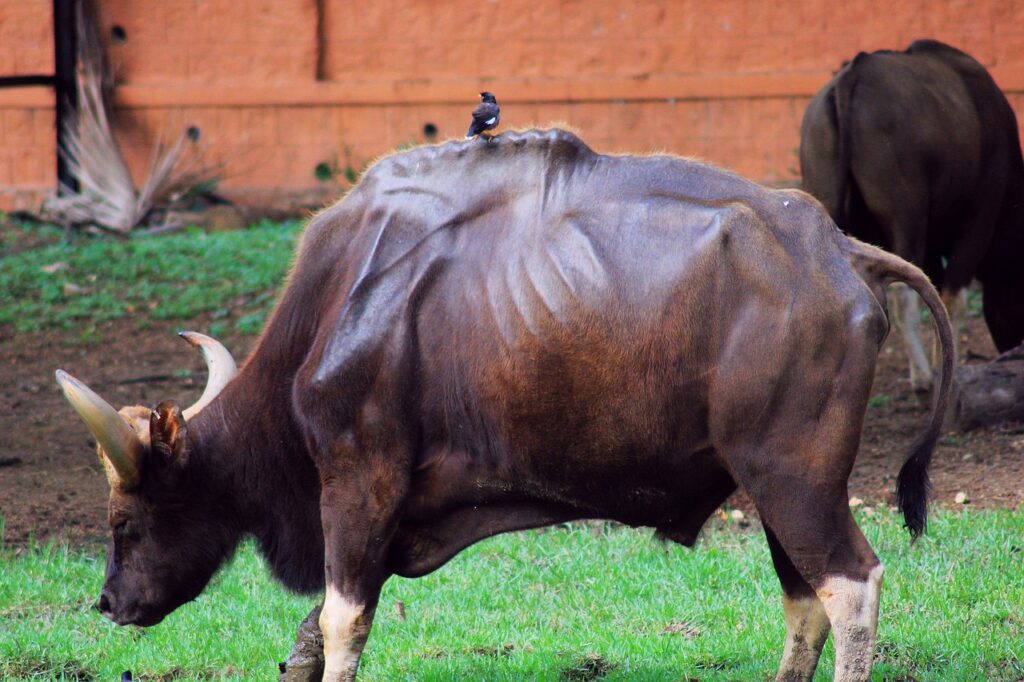
The gaur (Bos gaurus) is the largest species of wild cattle, native to South and Southeast Asia.
Weight and Muscular Build:
- Weight: Up to 2,300 lbs
- Shoulder Height: Up to 7 feet
- Appearance: Massive muscular hump over the shoulders and large, curved horns
Habitat and Distribution:
Gaurs inhabit evergreen forests, grasslands, and hilly terrain. They are shy and avoid human settlements, but when threatened, they can be aggressive and extremely dangerous.
#9 Saltwater Crocodile – The Prehistoric Heavyweight
The saltwater crocodile (Crocodylus porosus) is the largest living reptile and a direct descendant of prehistoric giants.
Hunting Power and Weight:
- Weight: Over 2,200 lbs
- Length: Up to 23 feet
- Bite Force: The strongest of any animal, capable of crushing bone with ease
Record-Breaking Specimens:
The largest saltwater crocodile ever recorded, “Lolong,” measured 20.24 feet and weighed 2,370 lbs.
#10 Kodiak Bear – The Massive Land Predator
The Kodiak bear (Ursus arctos middendorffi) is a subspecies of the brown bear found on Alaska’s Kodiak Archipelago.
Weight Variations by Season:
- Summer: Around 800–1,200 lbs
- Autumn (before hibernation): Up to 1,500–1,900 lbs
Diet and Dominance in the Wild:
Kodiak bears are omnivores, feeding on fish, berries, plants, and occasionally large mammals. Their immense size allows them to dominate their ecosystem.
Comparison Table of the Top 10 Heaviest Animals
| Rank | Animal | Max Recorded Weight | Average Length/Height | Habitat | Conservation Status |
|---|---|---|---|---|---|
| 1 | Blue Whale | 199 tons | 100 ft | Oceans worldwide | Endangered |
| 2 | African Elephant | 14 tons | 13 ft shoulder height | Sub-Saharan Africa | Vulnerable |
| 3 | Whale Shark | 20 tons | 40+ ft | Tropical oceans | Endangered |
| 4 | Hippopotamus | 4 tons | 5 ft tall, 16 ft long | African rivers and lakes | Vulnerable |
| 5 | White Rhinoceros | 2.5 tons | 6 ft shoulder height | Southern Africa | Near Threatened |
| 6 | Giraffe | 3,000 lbs | 18 ft tall | African savannas | Vulnerable |
| 7 | Gaur | 2,300 lbs | 7 ft shoulder height | South/Southeast Asia | Vulnerable |
| 8 | Saltwater Crocodile | 2,370 lbs | 23 ft | Indo-Pacific | Least Concern |
| 9 | Kodiak Bear | 1,900 lbs | 10 ft standing | Alaska (Kodiak Islands) | Least Concern |
| 10 | Colossal Squid | 1,100 lbs | 46 ft | Southern Ocean | Data Deficient |
This table helps visualize just how these giants compare — while the blue whale overshadows every competitor in weight, the saltwater crocodile dominates among reptiles, and the Kodiak bear is unmatched among land predators.
How Humans Impact the Heaviest Animals
Threats from Habitat Loss and Hunting
The Top 10 Heaviest Animals in the World: Nature’s Largest Giants share a sobering truth: many are under threat because of human activity. Key dangers include:
- Poaching — Elephants for ivory, rhinos for horn, and whales historically for oil and baleen.
- Bycatch — Whale sharks and colossal squids often become unintentional victims in commercial fishing nets.
- Habitat Destruction — Expansion of agriculture and cities reduces the range of gaurs, giraffes, and elephants.
- Climate Change — Warmer seas alter plankton distribution, affecting blue whales and whale sharks.
Conservation Success Stories
- African Elephants — Anti-poaching units and international ivory trade bans have slowed declines in some regions.
- White Rhinoceros — Intensive breeding programs in reserves have pulled them back from near extinction.
- Kodiak Bears — Strict hunting quotas and habitat protection keep populations stable.
These examples show that when humans intervene positively, even the largest and most vulnerable animals can make a comeback.
Conclusion – Celebrating Nature’s Largest Giants
From the shadowy depths where colossal squids drift to the sunlit savannas where giraffes stretch toward the sky, the Top 10 Heaviest Animals in the World: Nature’s Largest Giants remind us of the diversity and resilience of life on Earth.
Their size is not just a spectacle—it’s a survival strategy shaped by millions of years of evolution. Yet, their future depends largely on our actions. Protecting these animals is more than an ecological duty—it’s a promise to future generations that they, too, can marvel at the living giants of our planet.
FAQs About the Heaviest Animals in the World
Q1: Which animal is heavier, an elephant or a hippo?
An African elephant outweighs a hippo by several tons—up to 14 tons compared to a hippo’s 4.
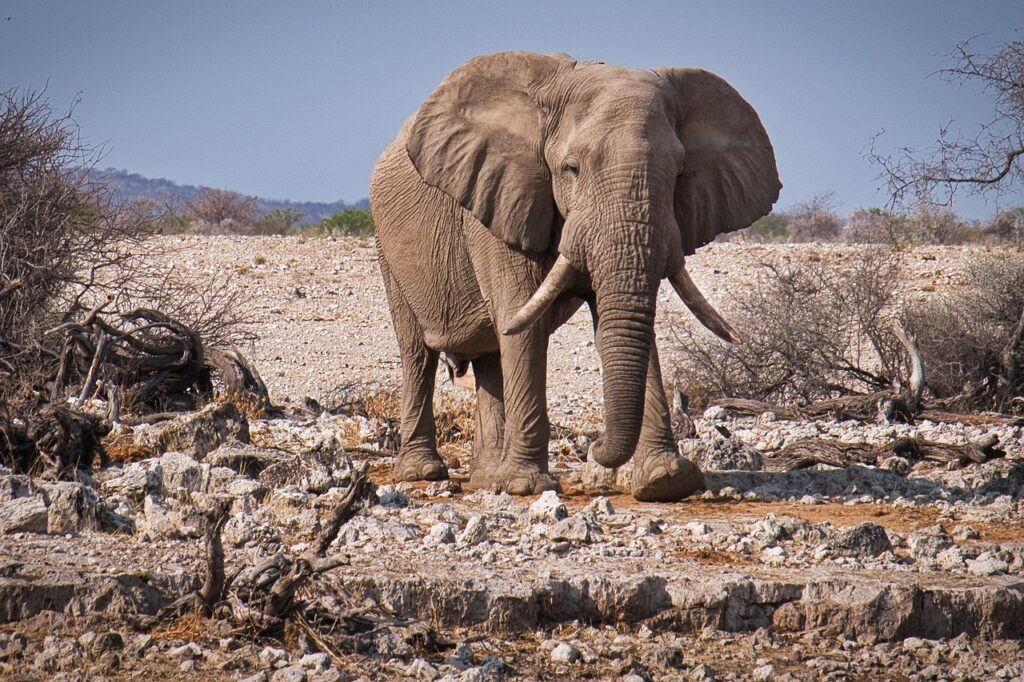
Q2: How much does the blue whale weigh?
The heaviest recorded blue whale tipped the scales at an estimated 199 tons.
Q3: Can humans encounter a colossal squid?
Extremely rare. Most sightings are accidental, involving dead or dying specimens brought up by fishing nets.
Q4: What’s the heaviest land predator?
The Kodiak bear holds the title, with pre-hibernation weights reaching nearly 2,000 lbs.
Q5: Are heavier animals more endangered?
Often yes, because they require more space, food, and are targeted for valuable body parts.
Q6: Which is the heaviest reptile in the world?
The saltwater crocodile claims the crown, with recorded specimens exceeding 2,300 lbs.

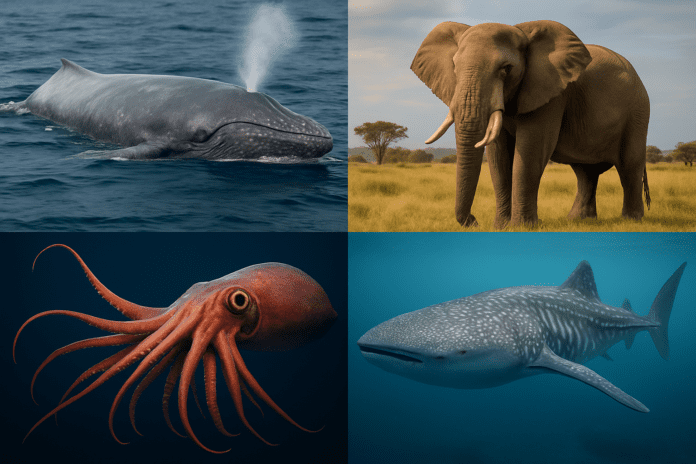
Hi there! I know this is kinda off topic however I’d figured I’d ask.
Would you be interested in exchanging links or maybe guest authoring a blog article or vice-versa?
My site discusses a lot of the same subjects as yours and
I feel we could greatly benefit from each other. If you might be interested feel free to
shoot me an email. I look forward to hearing from
you! Excellent blog by the way!